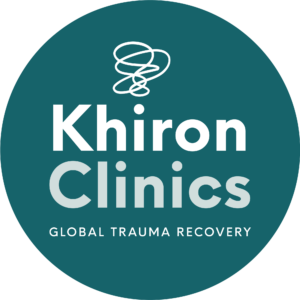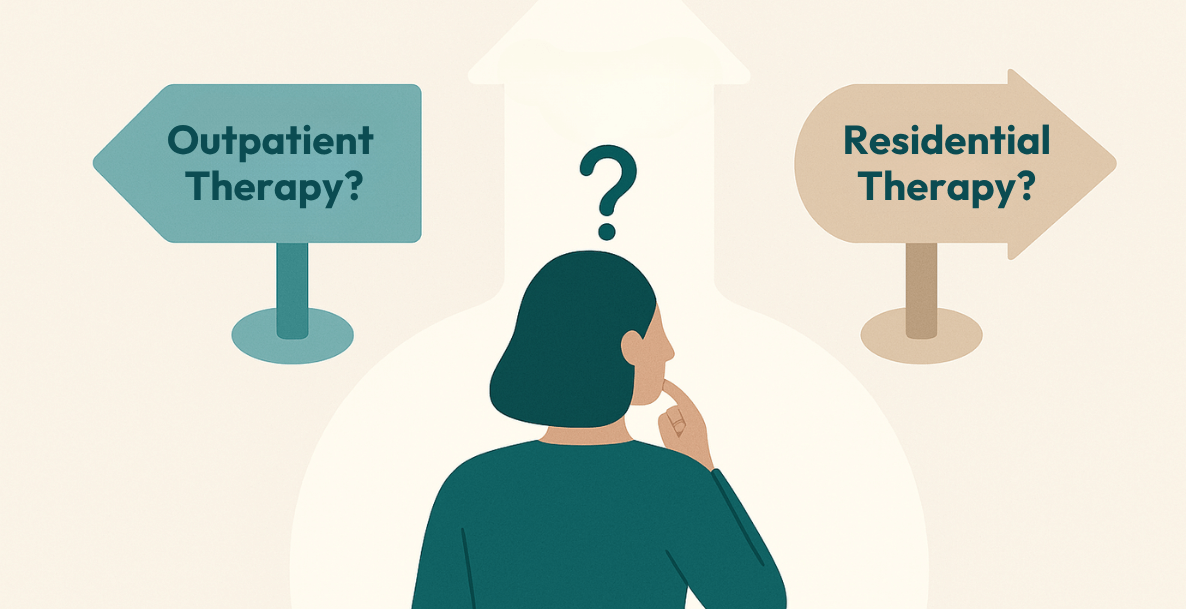At Khiron Clinics, the modalities used are carefully considered and align with our Polyvagal-informed approach to addressing trauma.
The type of trauma that we experience, and our body’s subsequent response, can vary widely, so a diverse combination of practices is required to create individualised programs that empower and engage each client. The names of these approaches may make them seem daunting and complicated, but here we explain each one in detail. Demystifying these processes, and ensuring the client’s awareness, understanding and control is essential in the context of trauma recovery.
Somatic Experiencing
Somatic Experiencing is a primary trauma reduction tool at Khiron House. By fostering a connection with bodily sensations and experiences, somatic experiencing facilitates the natural healing processes, empowering individuals to reclaim agency over their lives and move beyond the grip of trauma.
Sensorimotor Psychotherapy
Sensorimotor Psychotherapy (SP) is a body-focused psychotherapeutic method designed to address trauma stored within the body and nervous system. Developed by Pat Ogden in the 1970s, SP recognises how bodily disconnection hinders psychological healing.
For individuals who have experienced trauma, the past remains a constant force in their daily life. Triggers have the power to reignite powerful, distressing emotions and physical sensations that are just as overwhelming and distressing as they were during the initial event.
Eye Movement Desensitisation and Reprocessing Therapy (EMDR)
EMDR is a proven psychotherapeutic method for trauma treatment, pioneered by psychologist Francine Shapiro in 1990[1]. EMDR aims to reprocess traumatic memories, integrating them with standard biographical memories. Trauma disrupts memory processing, inhibiting proper storage and recall due to heightened arousal and stress affecting the hippocampus and amygdala.
Shapiro distinguishes between large-T – such as assault – and small-t traumas – such as school teasing – both causing emotional disturbances. EMDR aids in processing traumatic memories by linking them with positive beliefs and feelings. During therapy, clients recall the trauma while experiencing bilateral sensory stimulation, typically through rhythmic eye movements. This lessens anxiety and helps view the memory – and the associated feelings – in a more detached way, therefore ‘desensitising’ the sensory information that has been stuck in the amygdala.
EMDR also offers hope for those who cannot recall a traumatic experience. Unlike traditional talk therapy, it doesn’t hinge on detailed recounting of events. As sessions progress, memories may or may not surface unexpectedly, as connections are made. Regardless, EMDR focuses on processing emotions, thoughts, and physical sensations, rather than the memory. This aligns with the overall approach to trauma treatment at Khiron where we understand that trauma is an unfinished – or unprocessed – response to an earlier threat.
Trauma-Informed Stabilisation Treatment (TIST)
Trauma-Informed Stabilisation Treatment addresses self-destructive behaviours resulting from childhood trauma, neglect, and abandonment. Clients often struggle with overwhelming emotions and a chronically dysregulated nervous system, resorting to harmful coping mechanisms like self-harm and substance abuse. TIST integrates mindfulness-based cognitive therapy, Sensorimotor Psychotherapy, ego state techniques, and Internal Family Systems. TIST contextualises self-destructive behaviour as trauma-related, reducing feelings of pathology, shame, and increasing motivation for healing.[2] The approach has proven successful in treating complex PTSD, borderline personality disorder, addiction, eating disorders, and dissociative disorders.
Polyvagal-Informed Therapy
Khiron Clinics is proud to be a Polyvagal-Informed trauma treatment centre, receiving certification from The Polyvagal Institute in 2022 – the first in the UK.
Polyvagal-informed therapy is an approach to therapy that integrates the principles of the polyvagal theory into clinical practice. The polyvagal theory, developed by Dr. Stephen Porges, explores the role of the vagus nerve in regulating the autonomic nervous system and its impact on social engagement, emotional regulation, and stress responses.[3]
In therapy, practitioners use knowledge from the polyvagal theory to understand and address how the nervous system responds to stress and trauma. This approach emphasises creating safety and connection and regulating physiological states.
Polyvagal-informed therapy techniques may include exercises to promote grounding and relaxation, interventions to enhance social engagement and connection, and strategies to regulate arousal levels and manage emotional responses. By working with the nervous system’s natural processes, polyvagal-informed therapy aims to support healing and growth for individuals experiencing trauma, anxiety, depression, and other mental health challenges.
Internal Family Systems (IFS)
Internal Family Systems therapy delves into the relationship between various facets of one’s self, termed subpersonalities or parts. IFS identifies Exiles, Managers, and Firefighters as key parts of the internal system. Exiles represent suppressed aspects, often associated with shame and guilt. Managers oversee daily functioning, steering behaviour away from potential harm. Firefighters engage in survival behaviours, triggered when Exiles resurface.
The core self, unaffected by external events, is central to IFS. Positive attributes like confidence and compassion emanate from this core. In therapy, the goal is to recognise these parts as components of the self, addressing their burdens to restore harmony within.
IFS targets psychological wounds, especially in cases of childhood trauma. It addresses issues ranging from trauma and abuse to anxiety and substance abuse. Therapeutic sessions involve exploring internal dynamics and communicating with burdened parts. Mindful awareness facilitates dialogue between the self and these parts, leading to healing and the adoption of healthier coping mechanisms. By disentangling burdened parts and nurturing the core self, IFS promotes internal harmony, allowing individuals to move beyond protective roles shaped by past experiences towards a more confident and connected sense of self.
Bodynamic
Bodynamic integrates somatic developmental psychology and psychotherapy with a focus on the body’s role in psychological functioning. It emphasises mutual connection, dignity, and resource building, addressing how childhood experiences shape adult relationships and behaviours. By mapping psychological functions to muscles and fascia, therapists identify and develop resources to address trauma and foster inner security, enabling clients to approach life with greater awareness and choice.
Neurofeedback
Neurofeedback therapy, also known as EEG biofeedback, harnesses brainwaves to understand and regulate reactions to stimuli. It’s non-invasive, with electrodes measuring brain frequencies. Sessions, typically 60 minutes, involve observing brainwave activity in real-time to improve emotional regulation. Khiron Clinics offers neurofeedback therapy to help clients integrate trauma-informed treatment plans for holistic healing.
Brainspotting
Brainspotting combines elements from Somatic Experiencing and Eye Movement Desensitisation and Reprocessing. During sessions, therapists are attuned to the client’s emotional and physiological responses. Brainspotting locates eye positions linked to emotional resonance, using a laser pointer to identify “brainspots”. Clients then explore associated physical sensations, allowing for reprocessing of traumatic memories. Brainspotting targets trauma stored deep within the body, making it beneficial for anxiety, depression, and behavioural disorders.
NeuroAffective Touch
NeuroAffective Touch® is a somatic approach that emphasises touch as essential for body-mind integration. It addresses emotional and relational issues that may not be reached by verbal methods alone. Informed by polyvagal theory, it integrates somatic and psychodynamic approaches, attachment theory, and neuroscience.
Somatic Equine Therapy: Regulation and Connection
Equine therapy, rooted in the principles of regulation and capacity within the nervous system, harnesses the innate ability of horses to facilitate emotional and psychological healing. At its core, equine therapy emphasises regulation – the ability to respond appropriately to external stimuli and then return to a state of calm. This process is fundamental for mental health and is learned from infancy through secure attachments, where caregivers provide the necessary support for regulation.
Interestingly, the work of equine therapy isn’t primarily cognitive; rather, it focuses on the body, particularly the vagus nerve, which plays a crucial role in regulating the nervous system. Horses, with their large vagus nerves, act as potent regulators for human beings, akin to the nurturing presence of a caregiver to an infant.
Equine therapy is about relearning the skill of attunement, especially for those who have experienced disruptions in their ability to regulate due to adverse experiences or insecure attachments. By interacting with horses in a safe and structured environment, individuals can begin to reestablish trust, connection, and regulation.
Craniosacral Therapy
We know that traumatic experiences trigger fight, flight, or freeze responses, flooding the body with energy like adrenaline. Failure to discharge this energy leads to dysregulation over time, impacting emotional responses and triggering hypervigilance to potential triggers.
Craniosacral therapy offers a path to restoring balance by harnessing the body’s innate healing capacities. Practitioners utilise gentle touch and attuned perception to facilitate this process. At Khiron we believe craniosacral therapy has an important role in trauma healing alongside other modalities. We tailor treatment plans to individual needs, particularly when clients may not be ready for physical touch therapy due to trauma sensitivity. In this case, practitioners in the clinic work with the client towards negotiating boundaries and contact, allowing the client to feel heard and in control, something essential to the trauma-informed approach.
At Khiron Clinics, clients are empowered to guide their healing journey, ensuring treatment aligns with their comfort levels and therapeutic goals. For those ready to explore Craniosacral therapy, sessions provide a safe space to connect bodily sensations with past traumas and emotions. Through gentle touch, practitioners listen to the body’s subtle rhythms, aiding in the release of physical and emotional stress while fostering a deeper understanding of the mind-body connection.
Safe and Sound Protocol
The Safe and Sound Protocol (SSP), rooted in Dr. Stephen Porges’ Polyvagal Theory, uses filtered music to target specific sound frequencies, stimulating the vagus nerve and regulating the autonomic nervous system. Clinically tested, it aids in reducing stress, improving social engagement, and building resilience. Often used alongside other therapies like EMDR, and SE, the SSP helps individuals manage auditory sensitivity and enhance their ability to process external cues, fostering a sense of safety and calmness.[4]
Meditation, Mindfulness, and Breathwork
Mindfulness meditation and breathwork play pivotal roles in mental health recovery, especially for trauma survivors. Mindfulness cultivates present-moment awareness, allowing individuals to observe thoughts and emotions without judgement, reducing reactivity to triggers. Breathwork techniques, such as deep diaphragmatic breathing, regulate the nervous system, promoting relaxation and decreasing physiological arousal associated with trauma. Together, they empower individuals to develop resilience, enhance emotional regulation, and foster a sense of safety, crucial elements in the journey towards trauma recovery and overall mental well-being.
At Khiron Clinics we weave psychoeducation and strategies such as these into individualised treatment programs to ensure clients have the knowledge to understand, the awareness to tune into somatic and psychological signals, and the strategies to deal with discomfort, dysregulation and pain during the recovery process and beyond.
Sources:
[1] Schwartz, A. and Maiberger, B. (2018) EMDR therapy and somatic psychology: Interventions to enhance embodiment in trauma treatment. New York: W.W. Norton & Company.
[2] https://janinafisher.com/tist/
[3] https://www.polyvagalinstitute.org/whatispolyvagaltheory
[4] https://integratedlistening.com/polyvagal-theory/porges/






